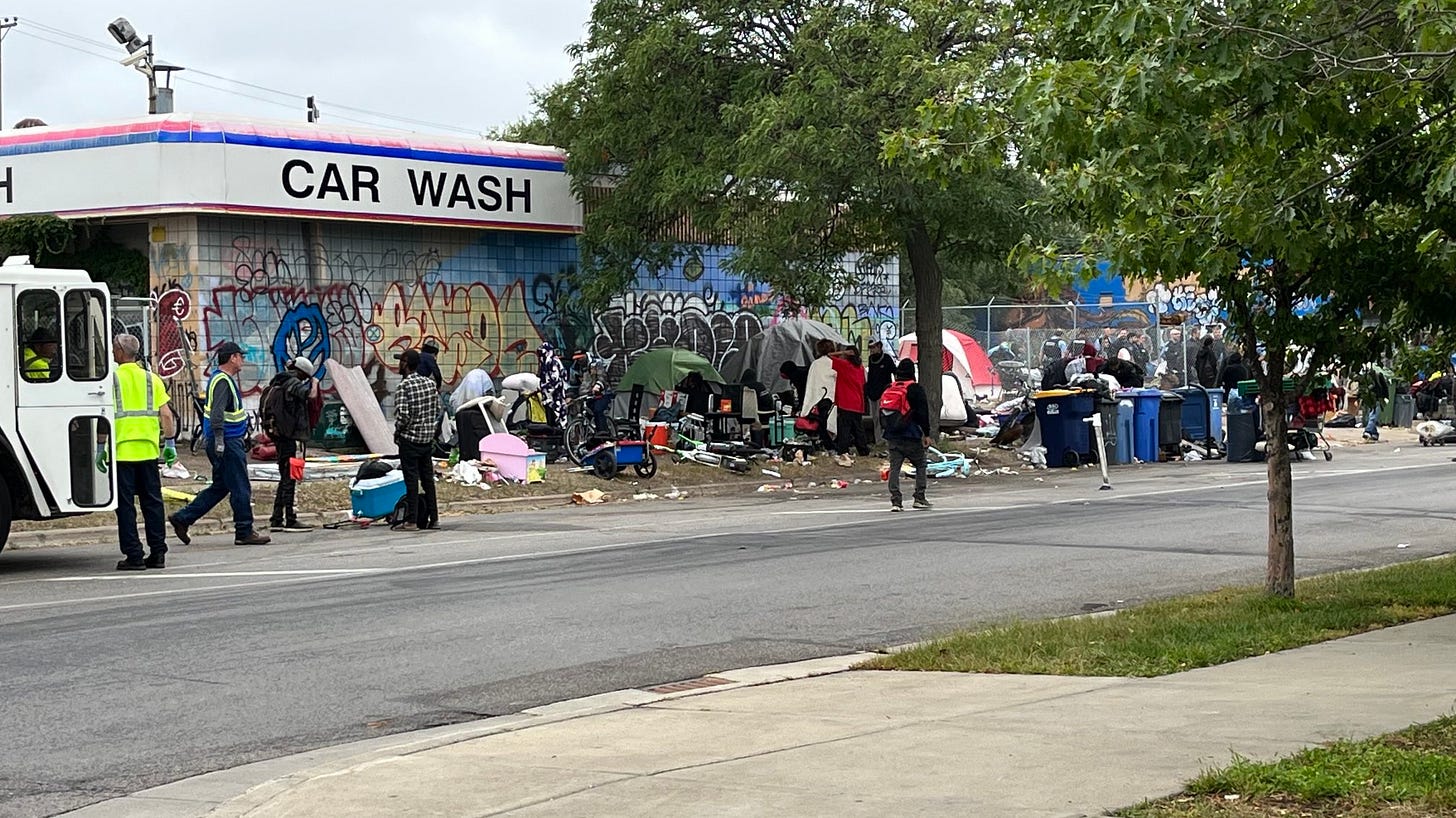This Holiday season, we’re going to talk about encampments, sweeps, and especially how they collide in the Winter.
In solidarity with those experiencing this terror firsthand, I will donate all of December’s Paid Subscriber earnings to the Sanctuary Supply Depot in Minneapolis, which provides direct aid and life-saving supplies to encampments.
If you’ve been thinking about becoming a Paid subscriber, now is a great time to start!
Two days ago, another camp was scattered in Minneapolis.
The one I referenced a few weeks ago is still set to close soon. The one that was raided on Wednesday was another large encampment, but without the same level community advocacy and attention. This particular group has been scattered nearly a dozen times in the last six months. You can see their trail around the city as new hostile architecture and fencing exists where they once laid their heads. The relentlessness of this policy is just so defeating.
I was recently on a Teams meeting with a plethora of outreach providers in the greater Minneapolis area. On the line was a contracted City employee who, when she was asked if the Sweeps were going to continue, responded that it is the City of Minneapolis’ held position that encampments pose a public health risk to the community, and so they are illegal.
And I couldn’t stop thinking about it the rest of the day. Because in a sense, she was right. Encampments are an issue of public health and even safety. But the question is whose health and whose safety are we really talking about?
Public safety, or “crime,” is the other most-oft cited reason for raiding and scattering encampments. Quite often, there are camps that cities or other municipalities are itching to get rid of, and when a crime occurs in or around it, they will use it as a justification to what they wanted to do (or even already planned to do) in the first place.
When it comes to public health and public safety, anyone can talk a good game and get people riled up. It comes down to, ultimately, who you view as “the public.”
Typically, “the public” is coded language for housed people, and unhoused people are seen as an outside, invading force. We aren’t interested in their public health or safety; we seem them as a threat to ours.
And it’s not the truth! Take crime/safety for example: unhoused people are far more likely to be the victims of crime than its perpetrators. When an encampment forms in a neighborhood and there is an increase in crime, that’s more often than not because the vulnerable people at the camp are being victimized, often by housed people.
This is a very common display of our bias. In response to this, people often ask me, “So what, people can just do whatever they want in those camps and it’s fine?” But everything bad that happens in camps, whether we’re talking about drug use, theft, or assault, also happens indoors. They should be treated the same—and yet I’ve never seen an entire apartment building demolished by the City because a crime took place inside it.
Regarding public health, it’s so crucial to talk about encampments. But once again, too often we see it as a uni-directional issue: that the encampment is unhygienic and could spread disease to the surrounding community. The encampment itself is seen as the problem, rather than the obvious concern that human beings, neighbors, constituents, members of THE PUBLIC(!) don’t have access to hand-washing and restrooms.
Minneapolis has repeatedly refused to provide portapotties or hand-washing stations to encampments. Last week, they finally provided toilets to ONE encampment… and then announced the camp would be closed in a few weeks. By not supporting and then sweeping these encampments, they sabotage the health and safety of the segment of the public who are already the most at-risk.
Encampments are not a public health or safety risk. Homelessness is, certainly… but only for the people experiencing it. Being unsheltered contributes to disastrous health outcomes, to the extent that the average lifespan of an unhoused person is decades less than that of a housed person.
Encampments simply bear witness to that crisis. They are the living, breathing, surviving, cooperative, resilient signpost to our failure to provide health and safety to the whole public. In fact when allowed to exist, people in encampments keep each other safe and well, which can be aided when cities or other groups provide access to running water and other basic needs.
That’s what public health and safety looks like.





The city I work in has put up fences around all the empty lots under the massive interstate bridges, preventing the creation of encampment. I often wonder how the face of the city would change if they simply marked off lots for tents and provided toilets and trash cans to these areas. Public health is at risk when people don't have a safe place to toilet or place garbage, not when they are sleeping on the streets using their shoes as pillows.